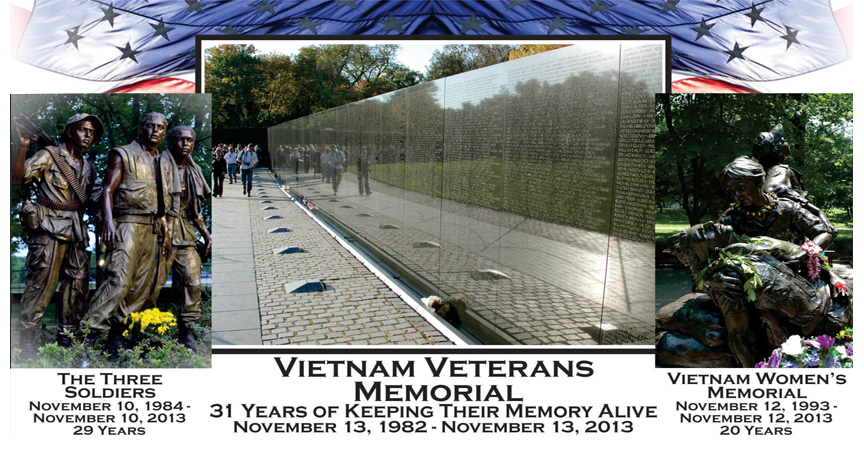
The Vietnam Veterans Memorial is a national memorial in Washington, D.C. It honors U.S. service members of the U.S. armed forces who fought in the Vietnam War, service members who died in service in Vietnam/South East Asia, and those service members who were unaccounted for (Missing In Action) during the War.
Its construction and related issues have been the source of controversies, some of which have resulted in additions to the memorial complex. The memorial currently consists of three separate parts: the Three Soldiers statue, the Vietnam Women's Memorial, and the Vietnam Veterans Memorial Wall, which is the best-known part of the memorial.
The main part of the memorial, which was completed in 1982, is in Constitution Gardens adjacent to the National Mall, just northeast of the Lincoln Memorial. The memorial is maintained by the U.S. National Park Service, and receives around 3 million visitors each year. The Memorial Wall was designed by American architect Maya Lin. In 2007, it was ranked tenth on the "List of America's Favorite Architecture" by the American Institute of Architects.
The Vietnam Veterans Memorial is not just a monument but for many who visit it a poignant experience. It is a reminder of what war can do to a country, in this case the tragic lost of 58,286 of its young men and women who died in that Conflict.
A young woman named Maya Lin designed the wall, which is now recognized world over by its architectural success. Although at one point there was some doubt that this architectural success would even occur.
Millions now visit this wall every year, and it has been purported to be the one of the most visited of the monuments in Washington, D.C. It is said that at any time of the day there is someone paying his or her respect to the thousands of names that are etched in black granite. Many leave mementos at the Wall, thousands of which have been collected and consequently cataloged by the Smithsonian.
The Vietnam Veterans Memorial has been compared to the Wailing Wall in Jerusalem, i.e. where people feel a strong need to make a pilgrimage. It is said by those who have visited this Wall, it has helped them to heal old wounds. And the sight of this Wall stirs many emotions, and has even driven grown men to tears.
Others have called this Wall, "the Black gash of Shame and Sorrow" basically because the use of black granite put into such a stark angular form reminds them of just that, i.e. a gash in the earth that represents a war where many fellow Americans had to give up their lives.